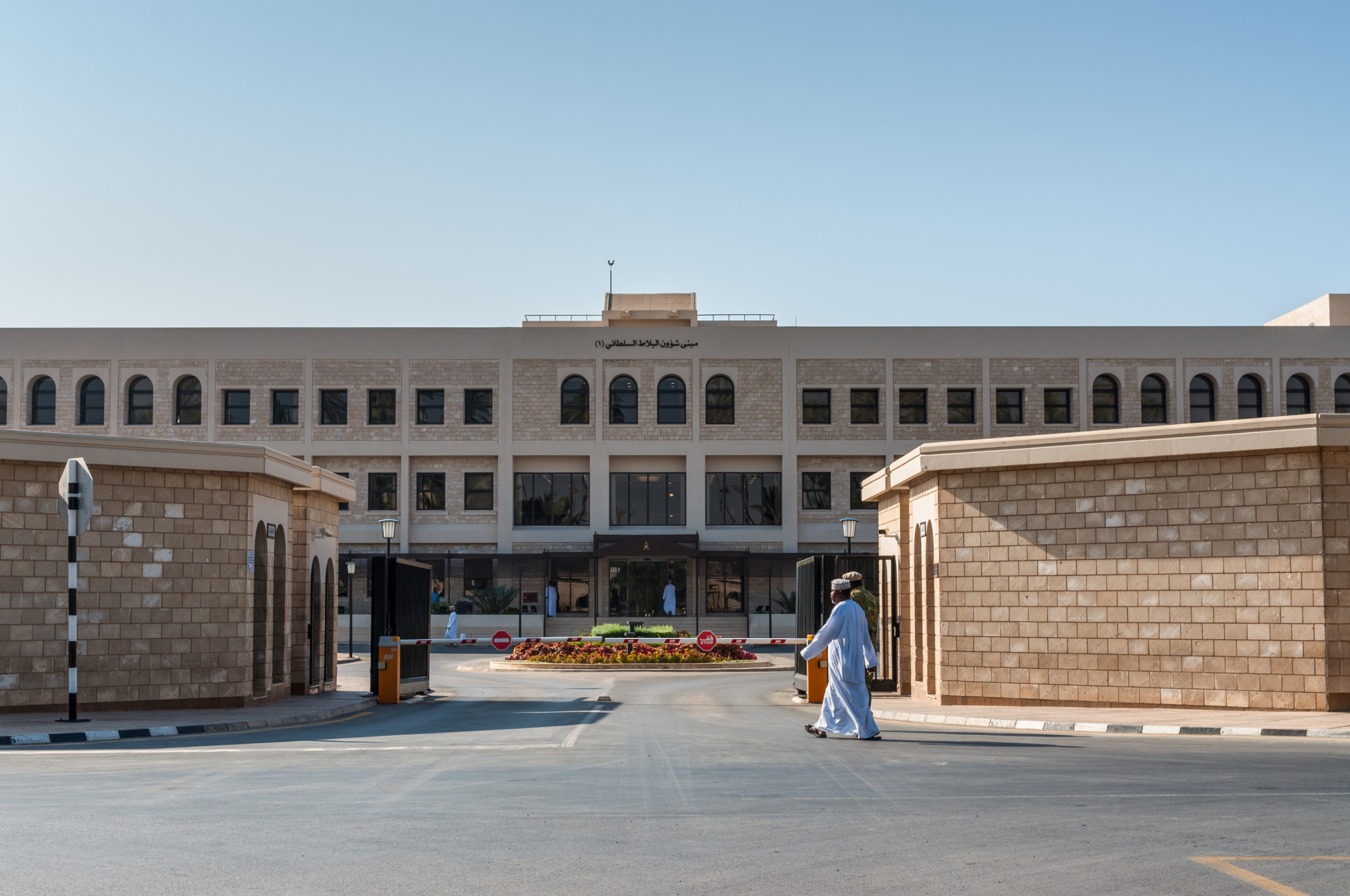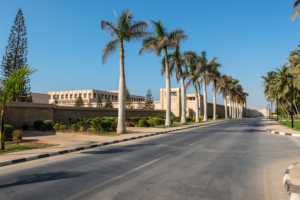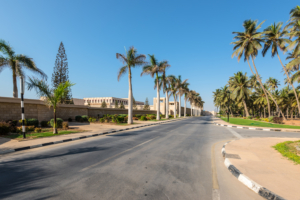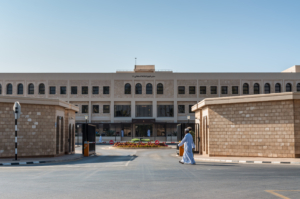

Discover the Rich History of Al Hosn Palace Salalah: A Must-Visit in Oman
Al Hosn Palace Salalah stands majestically in Salalah’s heart as one of Oman’s most remarkable architectural treasures. The stunning palace combines centuries of Omani heritage with intricate Islamic design elements. This masterpiece serves as proof of the sultanate’s rich cultural legacy.
The palace’s significance extends beyond its role as a royal residence. Its walls have witnessed countless historical events that shaped modern Oman. Royal ceremonies and diplomatic gatherings within these halls showcase Oman’s cultural traditions and leadership development through time.
This piece explores the palace’s compelling history, architectural brilliance, and cultural importance in Oman today. You’ll learn about its historical development, unique design elements, and its crucial role in modern Omani society.
The Historical Evolution of Al Hosn Palace
A closer look at the chronicles of Al Hosn Palace Salalah takes us back to the 18th century. This magnificent structure became one of Oman’s most important royal establishments. Built as both a fortress and royal residence, the palace stands as proof of Oman’s early rulers’ foresight.
Origins and early construction
The palace started as a strategic stronghold in Salalah. The original structure balanced defensive capabilities with residential comfort and included:
- Robust coral and sea stone construction
- Strategic watchtowers for coastal observation
- Traditional Omani defensive architecture
- Protected living quarters for the royal family
Role in Omani royal history
Modern Omani history gives special importance to this palace, especially with its connection to Sultan Qaboos. The Sultan’s formative years were spent here, and he received his primary education while the palace served as his childhood home. This personal connection turned Al Hosn Palace from a royal residence into a symbol of Omani leadership’s continuity.
Architectural transformations through time
The palace’s development shows how it adapted while keeping its historical essence intact. Several renovations have added new layers to its architectural story. The palace now successfully combines its original defensive features with contemporary elements. This creates a harmonious blend of traditional Omani architecture and modern royal requirements.
An impressive museum now occupies the palace. Visitors can explore artifacts that tell Oman’s cultural heritage story. These exhibits are a great way to get insights into the sultanate’s rich history. Al Hosn Palace serves not just as a royal residence but as a living museum of Omani tradition.

Architectural Magnificence and Design
The striking blue and white exterior colors of Al Hosn Palace Salalah catches your eye immediately. The palace’s architectural grandeur shows how traditional Omani craftsmanship merges naturally with Islamic design principles.
Traditional Omani architectural elements
The palace’s distinctive features showcase traditional Omani architecture beautifully:
- An innovative barjeel system – traditional ventilation with recessed arches
- Detailed fretwork on the walls
- A magnificent grand courtyard
- Impressive defensive walls that protect the royal residence
- A prominent clock tower at the entrance
Islamic artistic influences
The palace’s design elements reveal strong Islamic architectural influences through intricate geometric patterns and arabesque motifs. A majestic dome crowns the structure and reflects classical Islamic architectural principles. The detailed carvings highlight the sophisticated artistry of Islamic craftsmen.
Symbolic features and royal motifs
Al Hosn Palace stands out because of its rich symbolism. The National emblem of Oman appears proudly on both sides of the main gate – a golden khanjar (traditional dagger) with crossed swords against a black background. These royal motifs remind visitors of Omani sovereignty and cultural identity.
The palace’s architectural elements blend functionality with symbolic significance. The structure serves as a royal residence while its design elements – from ornate archways to defensive features – tell Oman’s architectural heritage story.

Cultural Significance in Omani Heritage
Al Hosn Palace Salalah stands as a cornerstone of Oman’s heritage and culture. Located at the crossroads of ancient trade routes, this magnificent structure has left its mark on local traditions and modern development.
Role in royal ceremonies and events
The palace does more than serve as a royal residence. It actively preserves Omani cultural heritage through celebrations and ceremonies that include:
- Annual festivals that showcase Omani heritage
- Traditional performances of local arts
- Royal ceremonies that bring the community together
- Cultural exhibitions that feature Dhofari crafts
Connection to Salalah’s development
The palace has helped transform Salalah from a small coastal town into a thriving modern city with about 450,000 residents. Its presence drives development while the region’s cultural identity remains strong, especially during the famous Autumn season when mist turns the area into a paradise.
Impact on local traditions
The palace’s influence extends to local traditions and artistic expression. Its architecture helps preserve traditional Dhofari design and craftsmanship. The structure symbolizes cultural exchange that reflects Oman’s unique position where Asian, African, and European influences meet. This geographical advantage creates a rich heritage where folksong, dance, and artistic traditions flourish near Al Hosn Palace.
Palace’s Role in Modern Oman
Al Hosn Palace Salalah stands as a testament to Oman’s rich heritage and governance. The national flag flies proudly whenever the Sultan stays during his visits to Salalah.
Current royal functions
The palace’s significance shines through its dual role as a royal residence and a symbol of authority. Public tours aren’t available, but the palace buzzes with diplomatic meetings and official functions. Cultural events and exhibitions within its walls showcase Oman’s art and music, which makes it a vibrant hub of cultural exchange.
Preservation efforts
A steadfast dedication to protect this architectural treasure shows through several active initiatives:
- Traditional architectural elements receive meticulous care
- The iconic white walls and intricate designs undergo regular restoration
- Historical artifacts and exhibits stay protected
- Native plants flourish in the well-maintained surrounding gardens
Symbol of Omani leadership
Al Hosn Palace embodies more than architecture – it represents the deep bond between Omani leadership and its people. The palace stands majestically along the Indian Ocean coastline. Its distinctive gate bears the national emblem and reminds everyone of Oman’s sovereignty and cultural heritage. The palace grounds remain off-limits, yet visitors gather nearby to photograph this enduring symbol of Omani leadership.

Conclusion
Al Hosn Palace Salalah is clear evidence of Oman’s architectural brilliance and cultural heritage. This 18th-century marvel bridges the past and present with its stunning blend of traditional Omani and Islamic design elements.
The palace’s influence reaches way beyond its magnificent architecture. It plays a significant role as a working royal residence and symbolizes Omani leadership. Its carefully preserved halls host important diplomatic meetings and cultural celebrations that shape modern Oman.
Oman’s steadfast dedication shows in every detail of this architectural treasure. From its distinctive blue and white exterior to its intricate Islamic patterns, the palace remains deeply woven into Salalah’s identity. It stands proud as a reminder of the sultanate’s cultural legacy and its promising future. Say yes to new experiences secure your seat Book Now!
